The Village Where They Pelt a Man in a Monster Costume With 30 Tons of Turnips
And nobody is quite sure why.
It’s a frigid winter morning in the remote mountain village of Piornal, Spain, and there is mischief afoot. The main road is eerily empty of cars. And everywhere—piled in the front of shops, rolling down gutters, floating in fountains—are turnips. The air is earthy, peppery.
Then the screaming begins. A mob shoves its way down a chute-like street into the main plaza. Close behind is the monster, clad in a suit of colorful rags, almost cute—except for the grin full of fangs and giant devil horns curving skyward. It swaggers forward, banging a drum. More people, by the thousands, pursue, chucking turnips at the monster for all they’re worth. The root vegetables ricochet off its body with astonishing velocity. The first half of the crowd, caught on the wrong side of the action, almost trample each other to avoid broken noses and black eyes. Then the monster stumbles toward a building and leans back against it. Their prey is now an easy target. Now the turnips really fly.
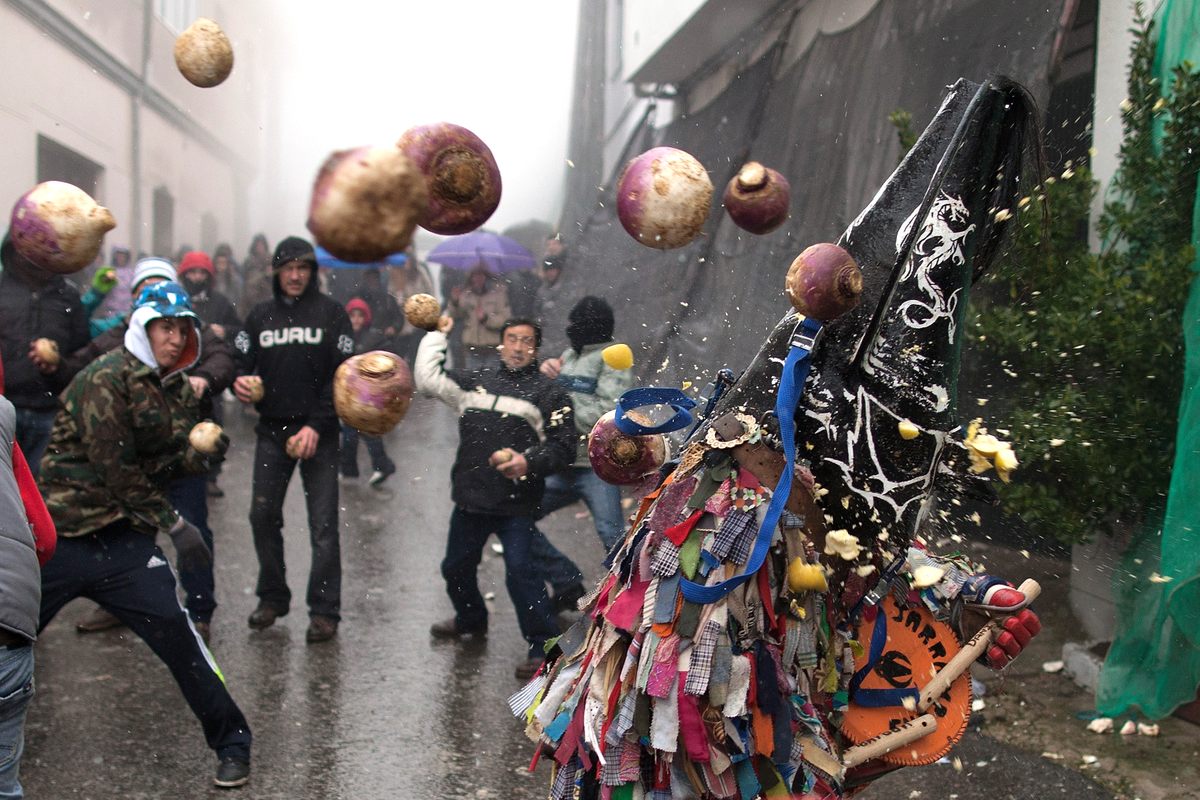
Finally, the monster throws down his drumsticks. The pelting stops. A group of men rush forward from the crowd and help lift off the heavy mask. Under the 110-pound costume, sweating and covered in turnip pulp, is a 19-year-old. His name is Adrián Moreno Serrano, but right now he is simply Jarramplas, the central figure in a unique festival of the same name that Piornalegos have celebrated every year for, well, nobody’s quite sure how long. Only one thing is certain: He has just taken the beating of his life, and he is the most important and beloved human being in Piornal.
Ask any Piornalego about the origins of Jarramplas, and the usual story involves a marauder who stole sheep and goats, and how the villagers drove him away with the only weapon on hand. But the truth, says Sebastián Díaz Iglesias, a Piornalego anthropologist who wrote his doctoral thesis on the ritual, is that nobody really knows where Jarramplas comes from. According to one hypothesis, the pre-Christian Celts who populated these mountains—due west of Madrid—thousands of years ago used Jarramplas to ritually drive out the nastiness of winter and usher in a fertile spring. (As you’re likely to be told if you attend the festivities, nabo, Spanish for “turnip,” is a common euphemism for penis.) According to another theory, Jarramplas derives from the Roman festival of Lupercalia, a fertility rite in February that had to do with protecting flocks of livestock from wolves. In the Lupercalian festival, a dog was sacrificed, and Jarramplas’s drum was traditionally made of dogskin.
At some point, as is the case with pagan festivals around the world, the ritual was Christianized, and subsumed in the feast day celebrations of San Sebastián, the third-century Roman captain who was martyred—though he was killed in a shower of arrows, not turnips. And there are other theories, too: that the ritual originated with Native Americans and was brought back to Spain by a returning conquistador, that the monster represents the “sinful” Christians who succumbed to conversion during the Muslim conquest, that Jarramplas was a ceremony to drive out the Black Plague.
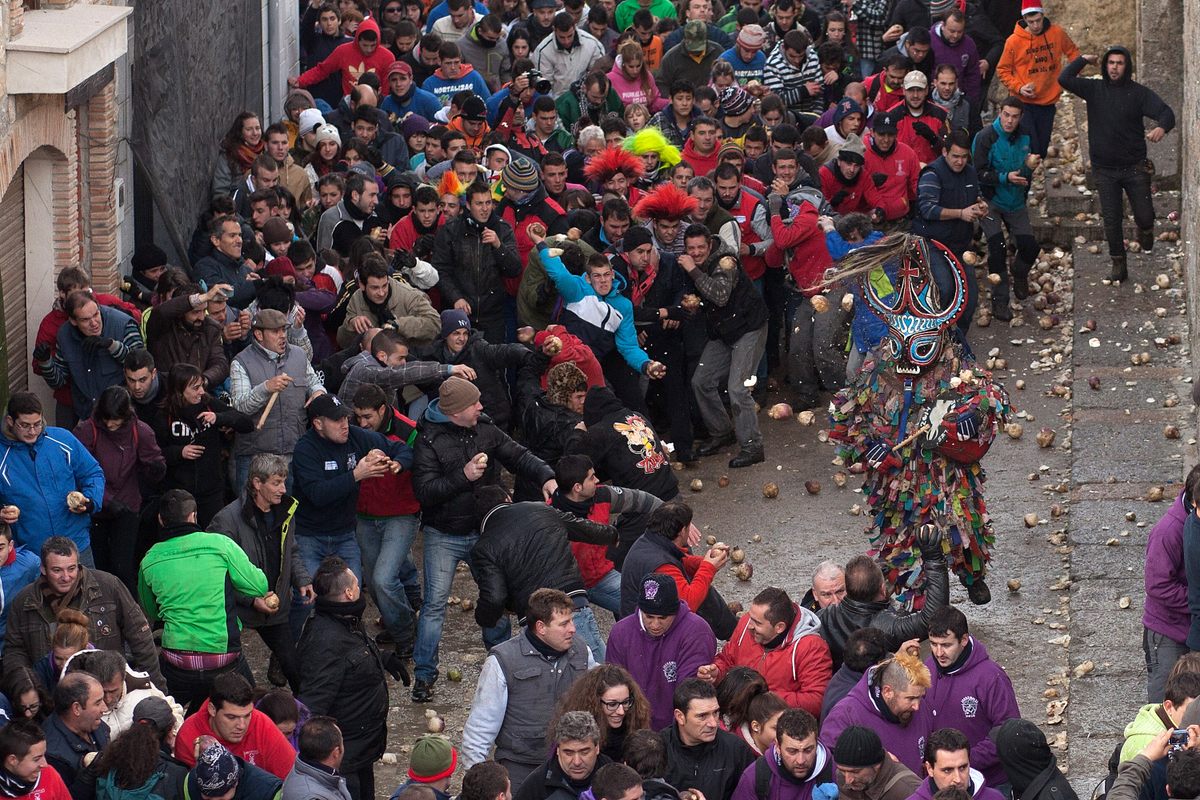
But Díaz can poke a hole in every story. For instance, Piornal wasn’t founded until the 13th century, throwing the Roman and Celtic theories on shaky ground. And according to town elders, turnips are used not because of their phallic associations, but because they are still abundant in winter (and used as livestock feed, unlike the more coveted potato). In the end, Díaz doubts the festival has a single origin. He calls it a “syncretism” of pagan and Christian traditions, with, perhaps, some borrowed ones mixed in.
In any case, the mystery is unlikely ever to be solved. The municipal archives were burned during the Spanish Civil War, and the precious few documents from the 18th and 19th centuries that mention Piornal lack information about Jarramplas. Díaz only knows for certain that the festival existed as early as 1898. He has documented the accounts of elders who remember that their own grandfathers, sent away to fight in the Spanish-American War of 1898, frequently made “promises” to be Jarramplas if San Sebastián brought them home safely.
In the mid-20th century, when Spain’s pagan festivals began to be seen as old-fashioned barriers to modernization, Jarramplas almost died out. In the 1970s, there was a year when the festival was a week away and no one had signed up to play the monster. (Luckily, the previous year’s star volunteered to undergo a second beating.)
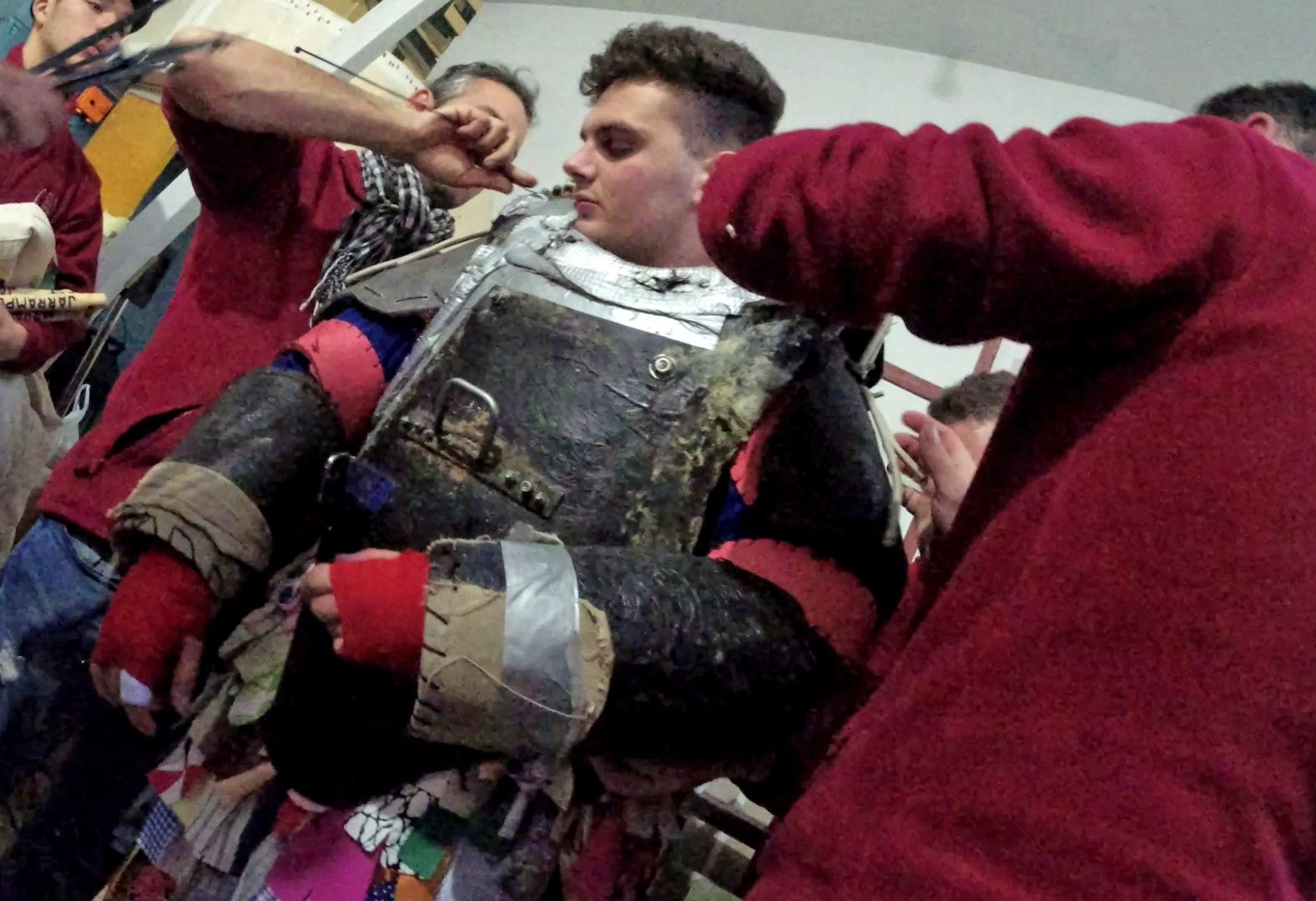
With the fall of fascism in Spain in 1978, the festival began to gain popularity again. It got modernized along the way. Originally, Jarramplas was only protected by layers of clothes. But in the 1990s, tired of seeing volunteers emerge black and blue every year, Díaz says, Piornalegos commissioned a nearby factory to make a fiberglass suit of armor. (Ironically, because the armor weighs so much, Jarramplas now can’t run away from his pursuers very well, and still gets a pretty serious beating.) The original dogskin drum has been replaced with plastic and canvas, and the traditional mask—cardboard decorated with animal blood, charcoal, and olive juice—is now just painted fiberglass topped with horsehair. Instead of gathering leftover turnips, the town council now buys them in mass quantities—this year it was almost 30 tons—from a farmer in a nearby town.
The meaning of Jarramplas to Piornalegos also seems to have changed, Díaz says. Originally, Jarramplas may have served as a scapegoat figure. In a small community, if a crime was committed and no culprit was found, “you have to look for someone [to blame] in order to calm the people down,” he says. The nonsense name “Jarramplas” might come from arramplar, which means “to make off with everything.” Jarramplas may be the one who carries away “everything we want to expel from our society.”
Today, however, scapegoats and fertility rituals don’t mean much to most Piornalegos. But Jarramplas is more popular than ever. According to town officials, around 14,000 people attended the festival in 2019; Piornal’s population is only 1,600. Meanwhile, the waiting list to be pelted with root vegetables extends to 2046. But these days, Jarramplas serves more as a way to “generate a certain unity, a certain village consciousness,” Díaz says. Beset on all sides by homogenization and globalization, Piornalegos “have something that makes us different,” he adds. “We’re not anonymous.”
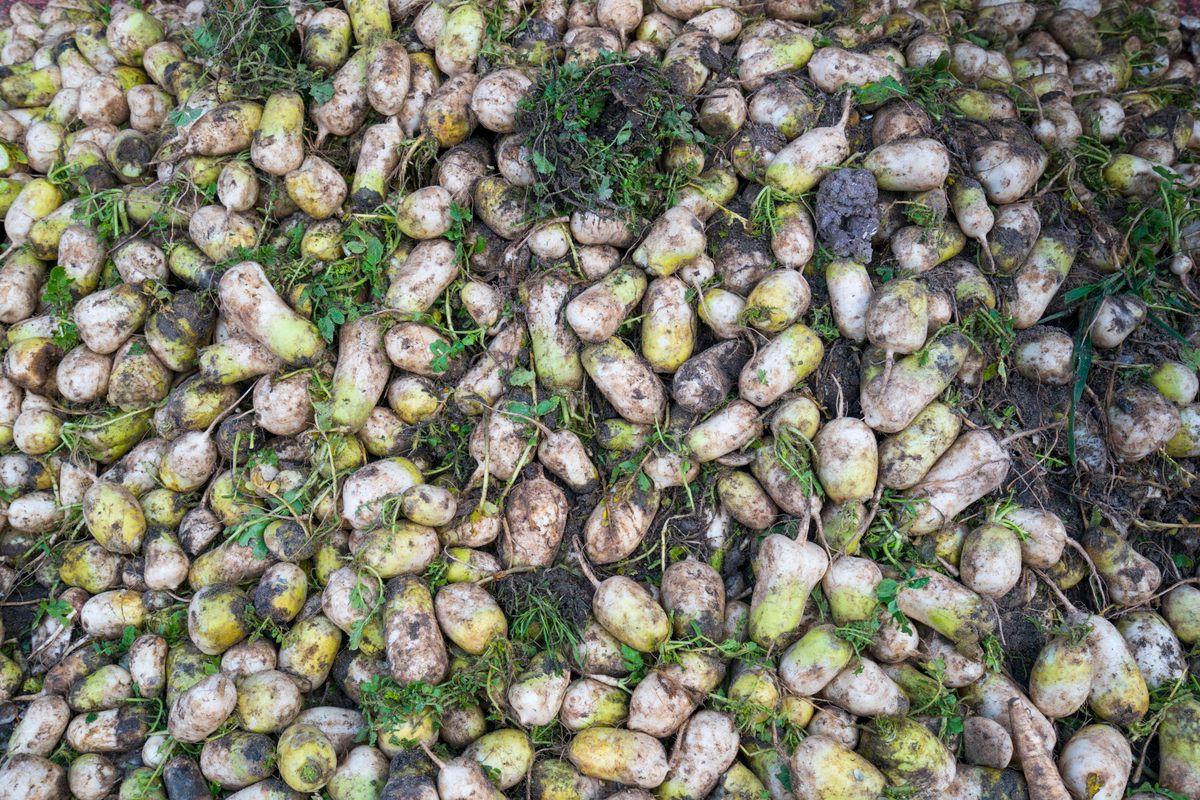
For young Adrián Moreno Serrano, the beating was a long time coming. His father, Miguel Ángel Moreno Iglesias, a 42-year-old cherry and chestnut farmer, signed the pair up for this when Adrián was only seven years old. Three months before the festival, Adrián’s mother, Sandra Serrano Calle, with the other mayordomos, Jarramplas’s family and friends, began to sew the costume, make the mask, and plan her husband and son’s route through town.
The activities begin on Friday, when volunteers dress up as Jarramplas for children up to age 14. On Saturday, several of the mayordomos warm up the crowd by dressing up as Jarramplas and getting pelted as they run from house to house for five-to-15-minute bursts.
In 2021, these Saturday activities could witness yet another change. There has never been a female Jarramplas. Traditionally women have been restricted to sewing the costume, singing, and cooking. A few years ago, a local woman caused a scandal when she donned the costume for the kids’ version. But in 2021, María Hernando Serrano, a 24-year-old journalist, will be mayordomo for a male friend. She plans to put on the costume for the Saturday volleys and actually have turnips thrown at her by adults. It will make her the first woman to do this, and “there’s going to be controversy,” says Hernando, who so far has only told her parents and close friends. “It does not make me hesitate one bit to know that people will criticize me.” She thinks her participation could pave the way for a female main Jarramplas in the future: “Traditions are there to be changed.”
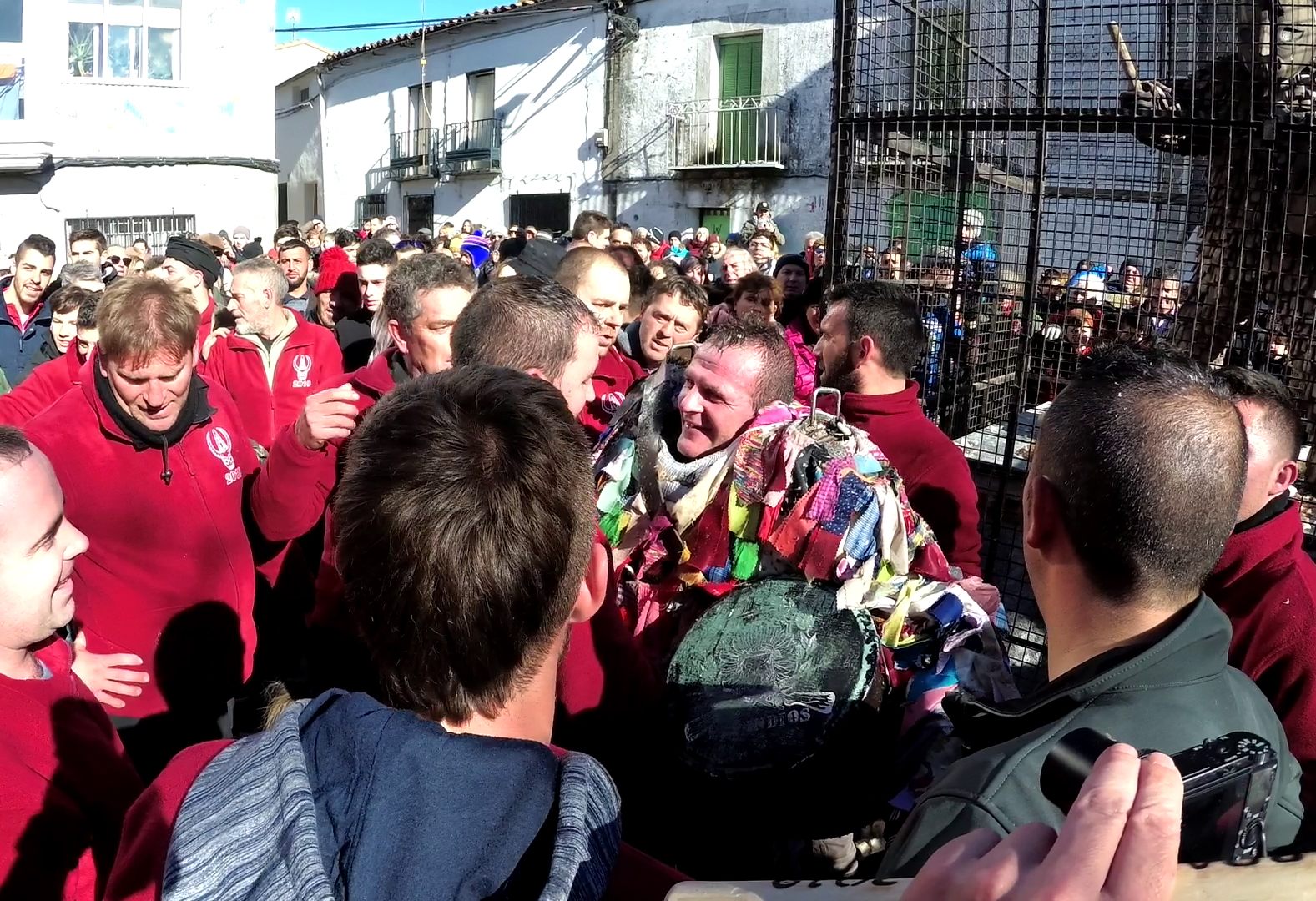
Saturday’s festivities are just the lead-up to the main event. In the afternoon, family and friends fete the father and son Jarramplas from pub to pub, where female mayordomos sing traditional songs. That night, under a fine, freezing mist, the entire town and many more crowd into the main plaza. As the church clock strikes midnight, Jarramplas father and son, sans masks, beat their drums and walk backwards. They process slowly through the streets while a group of women sing the eerie alborás (alba means “dawn”), traditional hymns that weave the story of San Sebastián with that of another, local Sebastián, a Piornalego sent to fight in the Italian wars of the 16th century. Given the pageantry, it’s a strikingly serious moment. But when asked if he considers playing Jarramplas a kind of sacrifice, Miguel Ángel disagrees: “It was a joyful thing for me.”
When the alborás ends, everyone feasts on migas, day-old bread fried with chorizo, onions, and spices, before hitting the pubs to dance until the wee hours. After too few hours of sleep, everyone gathers again at the church. On Sunday, Jarramplas makes two outings, one in the morning and one in the afternoon. Miguel Ángel, the elder Moreno, takes the first shift. Jarramplas is supposed to endure as long as he physically can before ending his route, usually at the house of a family member. To keep trudging for a solid half-hour while being walloped constantly by vegetables as hard as baseballs, Miguel Ángel says he kept his mind on both San Sebastián and “the people helping out all night …That gave me strength.” He adds gamely, “The idea is for people to enjoy it. With Jarramplas, the more they throw, the better.” (While Miguel Ángel says he spared his son, Adrián confesses to throwing a few turnips at his dad.)
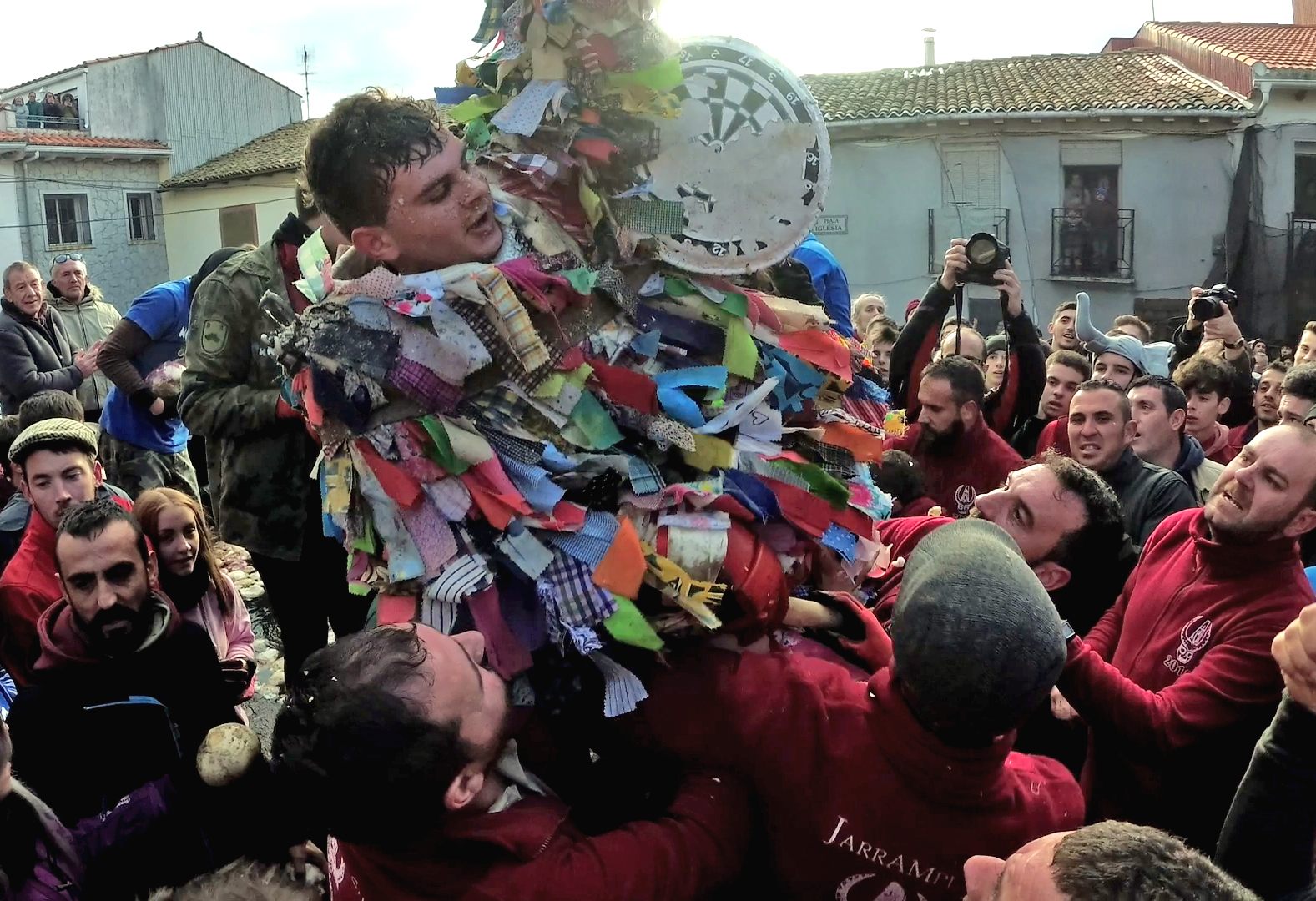
On Sunday afternoon, before Jarramplas’s final run, the energy in Piornal is electric. Inside the church, the priest is saying a mass for San Sebastián. Outside, a horde is waiting in the square, turnips aloft. A few people brandish cauliflowers, for extra fun. When mass ends, many of the worshippers are in tears, but outside the crowd’s excitement is rising to a fever pitch.
From inside the church, Adrián Moreno makes his way to the open door. His male mayordomos place the mask over his head, draw the straps tight, and push him forward. In an hour’s time, after a grueling march through Piornal’s narrow, crooked streets that will leave both him and the town out of breath and covered in turnip pulp, Adrián will be just another Piornalego again. But for now, he stands in the doorway as if on a precipice, his costumed bulk framed by the blinding winter light, demigod and demon and teenager in one. The crowd roars. And then the heavy doors swing shut, and all you can hear is the clamor of hundreds of turnips finding or missing their mark.
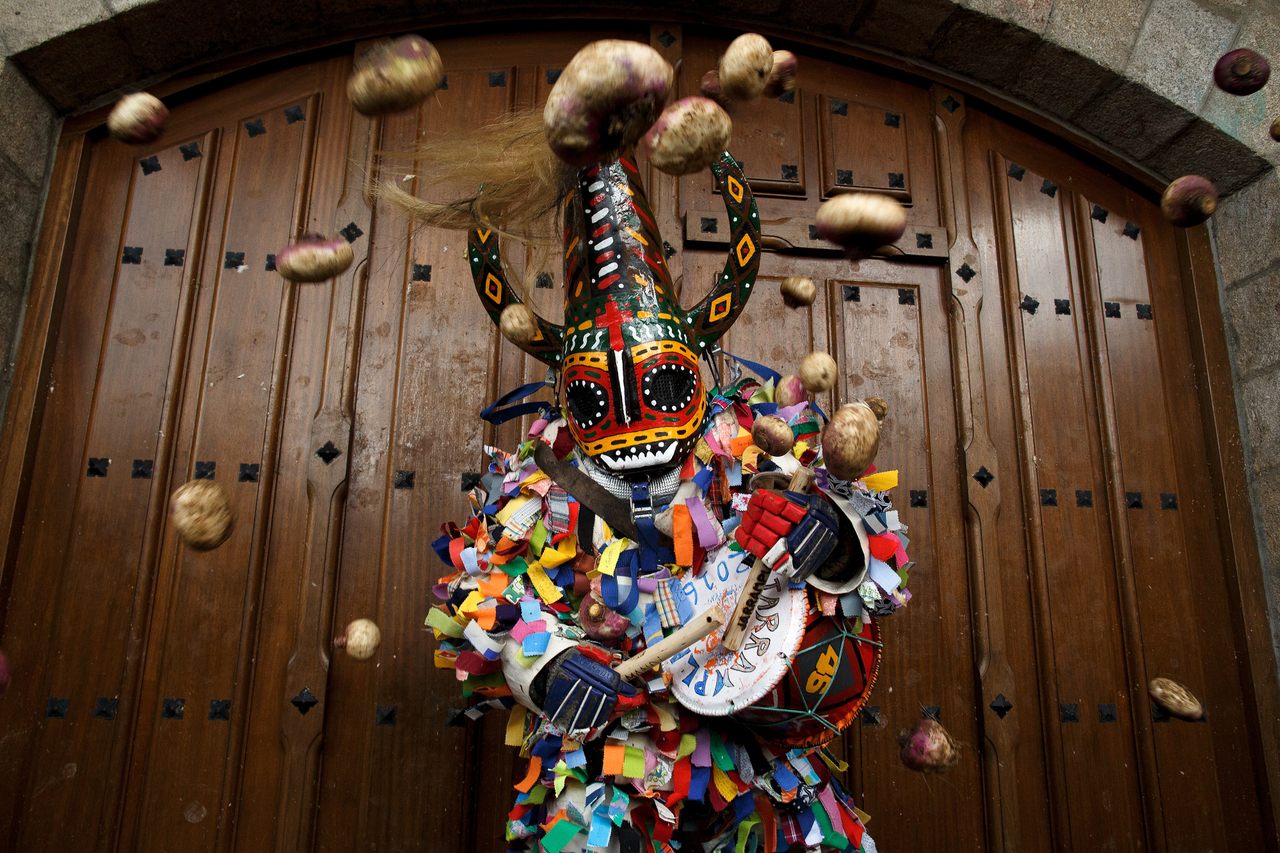



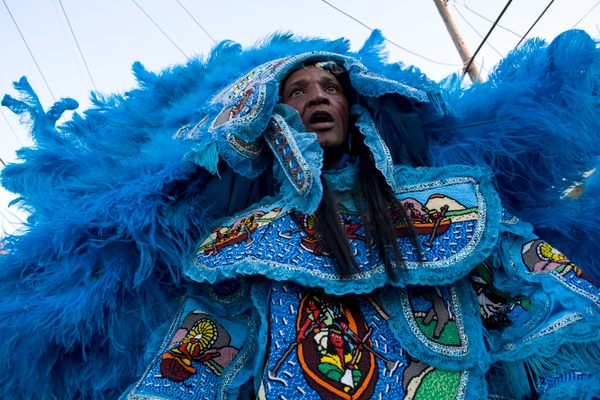
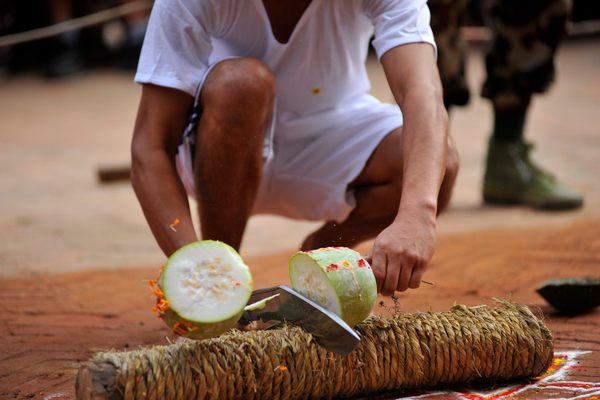






















Follow us on Twitter to get the latest on the world's hidden wonders.
Like us on Facebook to get the latest on the world's hidden wonders.
Follow us on Twitter Like us on Facebook